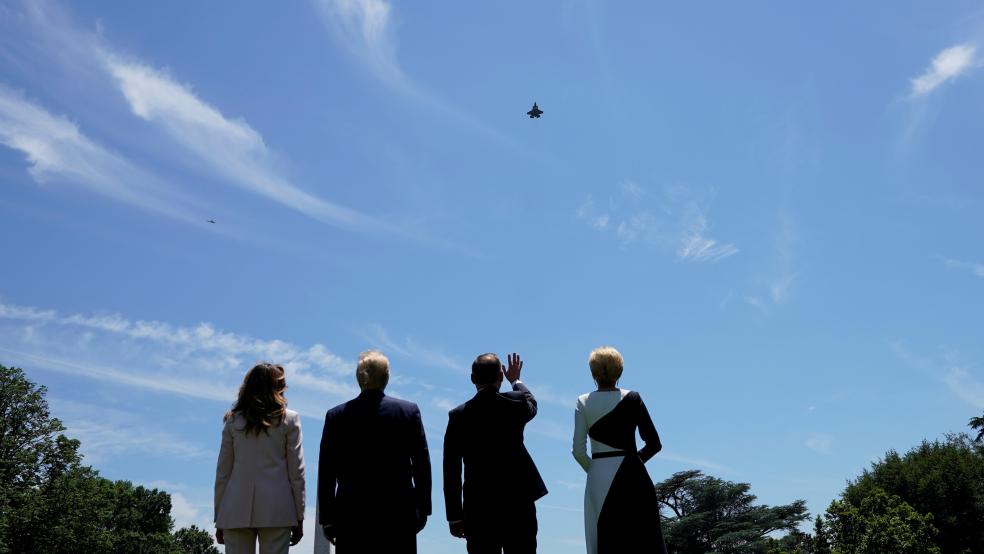A Marine Corps F-35 stealth fighter flew low and slow over the White House Wednesday, putting on what ABC News called a “rare, if not unprecedented” show for President Trump and President Andrzej Duda of Poland. The NATO ally has announced that it intends to purchase 32 F-35s to replace the aging Russian warplanes in its inventory.
The Polish air force may end up spending less to purchase its new F-35s than it originally anticipated. On Tuesday, the Pentagon announced that it had reached a tentative agreement with Lockheed Martin on a price for the next batch of F-35s, a bulk purchase of 470 jets. The $34 billion agreement – which would be the largest procurement in Pentagon history – would translate to a per unit price below $80 million for the most common variant, the F-35A. If the agreement is finalized later this summer, the plane will have hit its lower price target a year ahead of schedule, the Pentagon said.
It’s not all good news for the world’s most expensive weapon system, however. On Wednesday, Defense News released several new reports detailing serious, ongoing problems with the F-35 program. Issues include difficulties controlling some versions of the jet during combat maneuvers; potential damage to the aircraft’s frame and stealth coating at high speeds; pilots experiencing severe ear and sinus pain in the cockpit; and a lack of reliability in the jet’s cloud-based Autonomic Logistics Information System (ALIS), which is failing to diagnose problems and manage parts inventories. Some of the issues may not be fixed before the F-35 enters full-rate production, Defense News’ Valerie Insinna says.
Read what the War Zone’s Tyler Rogoway called “an absolute cluster bomb of stories” about problems with the F-35 at Defense News.




